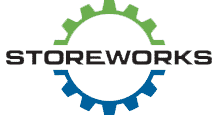Micro fulfillment has become something of a buzzword in retail lately, but the concept is not new. Perhaps you’ve heard the acronym BOPIS? (Short for Buy Online, Pick-up In-Store).
If you go back even further to the days of the Sears catalog, for example, large department stores positioned themselves as fulfillment centers, even in a pre-technology society.
Many cultural (COVID-19, anyone?) and technological drivers have pushed micro fulfillment to evolve over the years and explode in 2020. Staying competitive as a retailer from now on may depend mainly on how well you can leverage your store as a fulfillment center.
The experienced team at Storeworks counts in-store fulfillment as one of its many zones of expertise. We’ll help you create and curate customized micro fulfillment solutions that fit your evolving business model and deliver impactful ROI.
Contact us today to start planning your “smart store” revolution, and watch your customer loyalty and visitorship grow.
Why should I consider micro fulfillment?
While third-party shippers like Amazon have offered convenience, safety, and reliability in fulfillment, smaller local and regional brands can and should get on the micro-fulfillment bandwagon.
Why? Because you’ll win when you can leverage end-to-end ownership of your customer transactions. Further, the pandemic has pushed a record number of customers into online ordering in all industries. Ensuring you can serve your new and growing online audience with micro fulfillment means higher customer satisfaction overall.
With continued social distancing guidelines and shifting community movement and gathering restrictions, online ordering is likely to stay “a thing” from now on.
Even in the face of fewer in-store guest visits, you can still prosper and thrive as a retailer by up-leveling your micro fulfillment game.
Micro fulfillment challenges
While many companies have cobbled together micro fulfillment solutions as the pandemic descended, you’ll need to have the long game in mind for micro fulfillment success.
Let’s take curbside pick-up as an example. Grocery stores quickly designated more employees as in-store shoppers for a large influx in online orders in March of 2020.
Some grocers already had shop-online, curbside pick-up options in place, but that system had to ramp up volume and efficiency massively in just a few short weeks.
This emergency often meant spending more dollars on in-store picking staff, managing traffic pick-up lines in the parking lot, and still ensuring clear aisles and low check-out congestion for regular shoppers in-store.
These expanded logistics take labor costs and valuable time to navigate. It’s crucial to create micro fulfillment systems that don’t erode already razor-thin margins in any sector.
Creating micro fulfillment wins for customer loyalty

Getting micro fulfillment “right” is crucial to inviting and keeping loyal customers. After all, retail success still continues to be about the customer experience. Frictionless transactions are the wave of the present and will continue to influence future retail trends.
If your micro fulfillment systems create backlogs, congestion, don’t reflect accurate inventory, or result in customer dissatisfaction, your competitors are ready and waiting to capture your guests.
Here are several items to consider when building or optimizing your in-store fulfillment systems:
- What are your top micro fulfillment pain points? Do you continuously have a mile-long line of cars at your pick-up location? Do you need more inventory or warehouse space? Are additional labor expenses threatening your profits? You must first answer these questions and more like them before implementing the MFC (Micro Fulfillment Center) strategy that works for your business model.
- What ONE element would make the largest positive impact on your ROI? Perhaps you want to automate your picking process and decrease staffing hours. Maybe a dedicated warehouse space would enable you to optimize your MFC best. Perhaps even better marketing of the systems you already employ would help your bottom line the most. Once you identify your top one or two MFC fixes, you can begin allocating your time and money to enacting the most impactful solutions.
- How will you measure your success? By carefully integrating its loyalty program with an innovative software solution, Yesway drove “45% of its loyalty members from the (gas) pump to the store.” It’s essential to set up your KPIs before implementing new MFC software, equipment, and space.
Always let customer experience drive your MFC upgrades

For local, regional, and national retailers, customer experience should always drive your MFC decisions. What works for one store or one locale may fall flat for another.
When local health and safety guidelines vary widely, audiences will seek different shopping experiences depending on location, culture, values, and government leadership.
It’s smart to mine your existing audience members for their wishes, wants, and needs when it comes to building out your MFC. The last thing you want is to please your online shoppers while ignoring your in-store guests.
All MFC decisions should minimally disrupt in-store operations, creating a seamless marriage between traditional store visits and curbside pick up solutions.
Integrating customer loyalty programs with online convenience
Finally, massive fulfillment companies like Amazon provide significant loyalty incentives with programs like membership.
Embracing systems that let you stay in your customers’ lives long after their last order is the ultimate win. Incentivizing your customers with savings, points, or relevant specials when they purchase online is one key to remaining their first choice when a need comes up for your products.
Storeworks can help you blend your in-store POS loyalty programs with your online purchasing avenues. Our goal is to help you ensure gapless conversion between in-store visitors and online shoppers.
The online shopping experience should provide the same customer satisfaction and loyalty incentives that happen while browsing the real-life aisles. Further, you should also be able to collect as much quality data from online customers as in-store guests.
Outsource your MFC optimization with Storeworks
At Storeworks, we deliver superior micro fulfillment solutions that help you compete and thrive in today’s wildly shifting retail environment. We help you stay nimble and in-charge no matter what radical retail changes take place around you.
Our customized approach can help you laser-focus your MFC upgrades precisely in the areas that need the most help. In other words, we get to know your stakeholders and audience so we innovate where it counts, and don’t fix what isn’t broken.
Contact us today to make your store a standout in micro fulfillment, and own your customers’ transactions from end-to-end.
